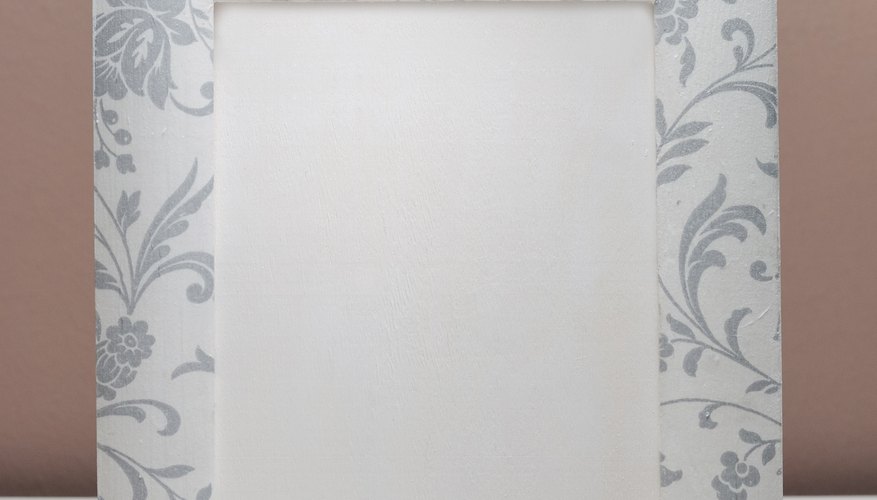Turn an old mirror with a drab frame into a custom piece of art to dress up your room, bathroom or the living room. Combining paper, three-dimensional art and function, découpage is a craft that goes back to the 18th century, when hobbyists used lacquered paper mosaics to decorate furniture and other objects instead of painting them. Use lightweight paper, tissue paper, printed napkins, wrapping paper or magazine clippings to customise your mirror.
- Turn an old mirror with a drab frame into a custom piece of art to dress up your room, bathroom or the living room.
Apply the masking tape around the inner edges of the mirror's frame. Lay a layer of newspaper over the exposed mirror, and tape it down.
Prepare your paper. You can cut the paper into precise shapes, cut out printed pictures or tear the paper into random pieces. Pieces should be no bigger than around 7.5 to 10 cm (3 to 4 inches) long.
Sand the frame with a fine-grit sandpaper to prepare it for decoupaging. If the frame is made of unfinished wood, apply a base coat or two of paint and allow it to dry completely.
Brush a thin coat of découpage paste on an area of the frame. Place pieces of paper over the paste, then brush the tops of the paper to seal them. Push out any air bubbles with your fingers. Overlap the paper slightly for a solid look, or set the cutouts spaced apart to allow the frame to show through. Repeat until the frame is covered, then dry overnight.
- Sand the frame with a fine-grit sandpaper to prepare it for decoupaging.
- Brush a thin coat of découpage paste on an area of the frame.
Mix poly coating or varnish as directed. Brush the coating over the frame evenly. Allow the coating to dry overnight.
Remove the newspaper and masking tape from the mirror.
TIP
To prevent the frame from sticking to your surface, raise it slightly by placing a tuna can near each corner underneath. If you don't have découpage paste, dilute 3 parts white glue with 1 part water to use instead.
WARNING
Use poly coating or varnish in a well-ventilated area.
